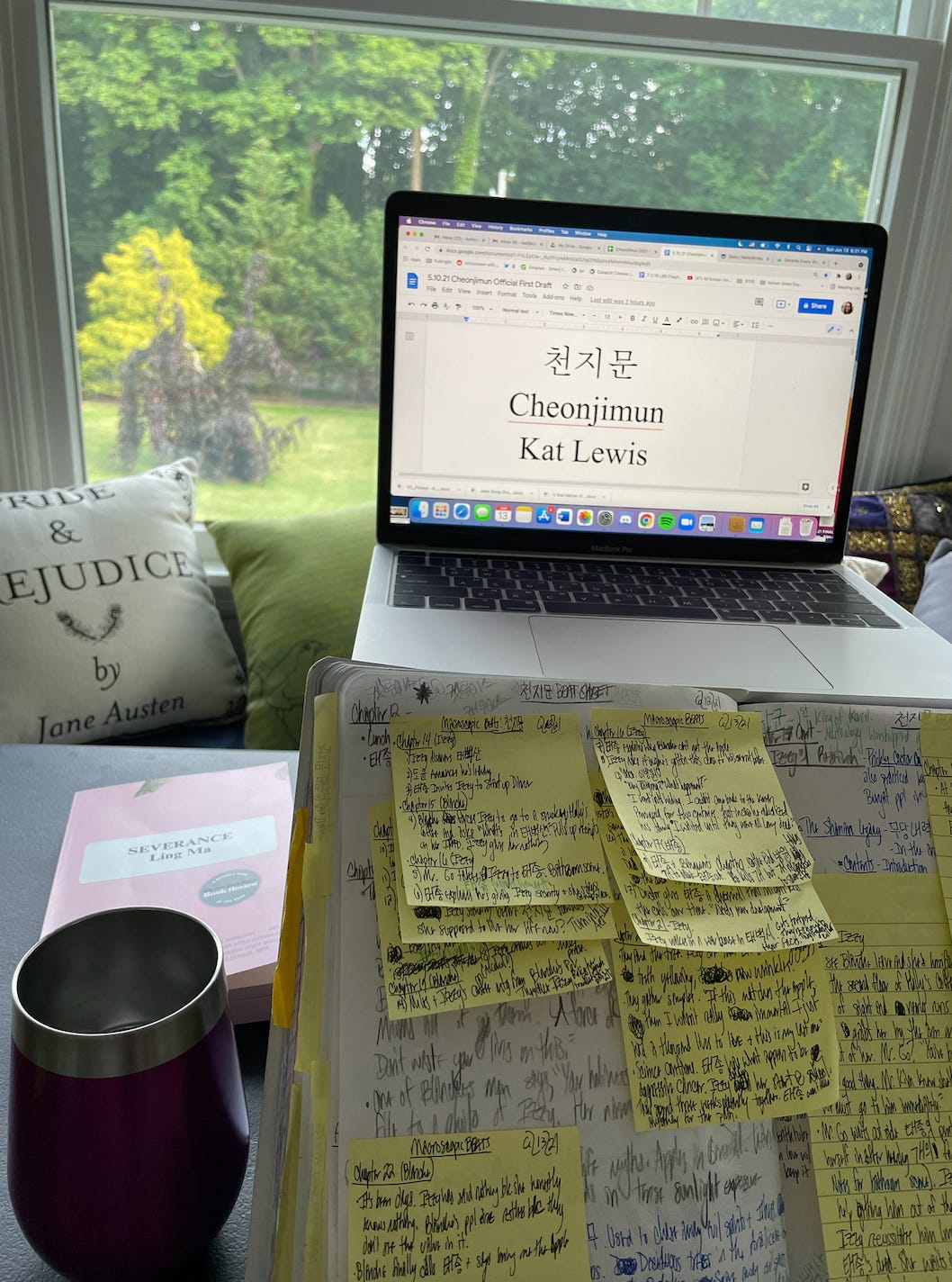Hello Reader,
My name is Kat Lewis, and I’m a fiction writer and narrative designer based in Seoul, South Korea. You may have seen one of my Twitter threads about writing narratives for video games or drafting strong personal statements for MFA applications. Or maybe you know me for my short stories or nonfiction about the Black experience in South Korea.
A few weeks ago, I tweeted a poll to discover the best medium for sharing writing craft lessons, and Substack was a popular choice. Over the next year, I’ll be publishing the course content from the novel writing class I taught at the University of South Florida in this newsletter. Through these posts, you’ll learn everything from creating effective story structures and character goals to writing realistic dialogue and scenes wrought with tension. In this course-turned-newsletter, I will be popping the hood of my creative process and showing you all the tools that I use as a professional writer and video game narrative designer. Just like my Twitter threads, all the lessons are concrete and practical, and each lesson will demonstrate precisely how these tools could transform your writing life.
The first craft lesson will be available for free in next week’s newsletter. This lesson will introduce you to the plot diagram that made my writing process 100% more efficient. All of the following craft lessons will be sent to subscribers once a month.
During the other weeks of the month, this weekly newsletter will document my journey toward publication as a new MFA grad. My goal with this Substack is to give other early career writers real-time insight into the reality of getting a debut novel published.
So far, my path to publication has been disappointing but not uncommon. If you have been following me for a while, you have probably seen a photo of this manuscript:
I worked on Lit by Burning for six years. In August 2020, my agent and I put it out on submission. By February 2022, it was rejected from most major publishers in New York and indies both in the midwest and on the west coast. This was particularly devastating because I had done everything “right.” I went to a great creative writing program for undergrad (Johns Hopkins), got a Fulbright grant to support my writing, and went to another great program for my MFA (both USFs). I wrote every single day. I had practiced my craft, created iron discipline, and truly wrote the best book I could (at the time). My agent and I even submitted to editors that I had met face-to-face through another fellowship.
But in the end, none of that mattered.
In Save the Cat Writes a Novel, Jessica Brody describes a similar experience on sub, and my rejection letters essentially said the same thing as hers: “Great voice. No story.”
Just like that, two degrees and six years of work amounted to very little in the grand scheme of things. By March of this year, I was too burnt out on Lit by Burning to rewrite it from scratch with a new, straightforward external plot. All I could do to move forward was study story structure and start over with a new idea.
Last summer, I wrote the first draft of Cheonjimun after I finished my MFA. This blog will document my revision process from now up to the moment my agent and I submit this book to traditional publishers. As I work toward my book’s submission, I’ll teach you everything I know about writing and storytelling.
Overall, I want to make this newsletter a love letter to process. My previous experience on sub damaged my relationship with the writing process because I became too focused on the final product rather than the creation itself. If I can find joy in creation again, I think that the disappointment on the other side of rejection won’t have the same power over me. This newsletter is a means for me to relearn that writing is about the process and the journey—not the product. While I hope this journey ends with a published copy of Cheonjimun in both my hands and yours, I’ve been through the submission process before, and I know there’s a good chance it might not.
Regardless of whether or not I sell my novel to a traditional publisher, we’ll both learn, at the very least, what not to do when pursuing a career as a novelist. Above all else, I hope that documenting this journey encourages at least one person to pursue their own creative goals while finding joy along the way.
Until next week,
Kat






